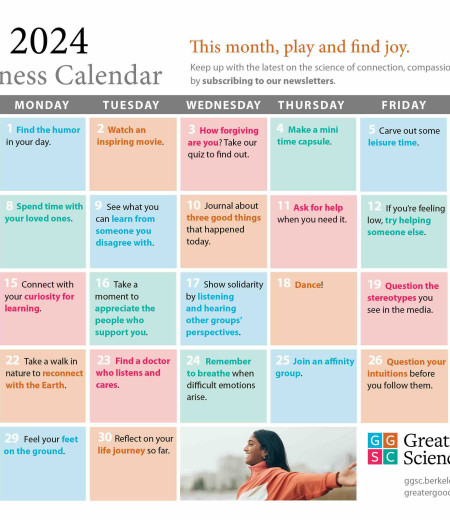When I was in seventh grade, the popular girl who sat in front of me in English class once showed me her chart that tracked what students wore on a daily basis. Then she proceeded to inform me that I lacked a sense of color with my blue OP shorts and purple Izod shirt.
No kidding. Unfortunately, in school—as in the rest of life—status often hinges on superficial traits, like what you wear. So when I read about a new study suggesting that kids can boost their popularity by being kind, I was filled with hope.
 © omgimages
© omgimages
In the study, which involved more than 400 students between the ages of 9 and 11, students who were instructed to perform three kind acts one day each week for a month got a greater boost in popularity among their peers than those who were told to visit three places each week.
What’s important to note, however, is that the students were asked to perform these acts of kindness as part of the study, illustrating how, even though we have an instinct for empathy and compassion, we often need to be encouraged to act on that instinct.
So how can teachers encourage more of their students to practice kindness—and help their social status while helping others?
For starters, teachers can lead the exercise performed in this study; Kristin Layous, the lead author of the study, has generously allowed us to post the script here that teachers read to their students. As you’ll see, the script gives examples of different forms of kindness, and goes on to explain:
Although it is always good to be kind to others, sometimes we do not take the time to go above and beyond to do nice things for others. Therefore, TOMORROW, you are to perform THREE acts of kindness—all three in one day. The three kind acts do not need to be for the same person, and it doesn’t matter if that person knows whether you did it or not….The following day, you will be asked to report back and list what acts of kindness you chose to do. If you want to make a note of what acts you did in order to help you remember them, please feel free to do so.
When I spoke with Layous, she emphasized the importance of performing the three acts in one day. “We have found in the past with adults that having people perform kind acts during one day of the week shows larger increases in well-being than having them spread the kind acts throughout the entire week,” she said.
There are several ways to deepen this exercise. For example, have students reflect (verbally or written) on their experience. You might ask them: How did you feel about this exercise? What did you learn about yourself and/or other people as a result of this exercise?
Then, to take it to the next level, try one of these two extensions (or both!).
Extension 1: Being Kind to Outgroups
• First, have students perform an act of kindness for someone they don’t know or who is not considered part of their “group” or “clique”.
• Afterward, ask them, “How did it feel to do something kind for someone who is not a close friend or family member?”
This extension is especially important for middle adolescents (14-15 year olds) who researchers confirm are more likely to exclude fellow students based on their behavior or clothing. Therefore, discussing how “intergroup” acts of kindness feel for both parties could be eye-opening for these students—a jumping-off point for deeper discussion about compassion and acceptance. However, moral development expert Larry Nucci states that students need to first explore why peer conventions are important for group membership before they can consider the moral and/or emotional impact of exclusion versus kindness.
Extension 2: Harriet the Spy Re-Boot
Have students be on the lookout for three acts of kindness performed by their peers. Then have them share at least one of the acts they witnessed with the class. (Word to the wise: Keep the acts anonymous—researchers have found that children who are rewarded for kind acts are less likely to act kindly in the future.)
This kind of spying carries several real benefits. First, watching others perform kind acts makes us feel good. There’s a very real physiological reaction that occurs called “elevation,” which psychologist Jonathan Haidt describes as that warm, uplifting feeling we get in our chest when we see unexpected acts of human goodness, kindness, courage, or compassion.
What’s more, experiencing elevation actually makes us want to help others. So encouraging your students to watch for others’ acts of kindness may actually result in a more caring classroom!
Finally, it’s important to have students describe to the class one of the acts they witnessed because elevation is contagious. Even hearing a second-hand story about kind acts can make us feel love, hope, or optimism.
All that said, sometimes kindness will carry the day even without these kinds of exercises. In case you’re wondering what happened to the popular girl I mentioned in the beginning—I ran into her 20 years later at a high school reunion and felt a little trepidation about approaching her, thinking she might once again sneer at my clothes. But my fear was unfounded: She had, in fact, grown up to become a very nice adult. It was affirming to see that her innate kindness had, in the end, trumped Ralph Lauren.








Comments